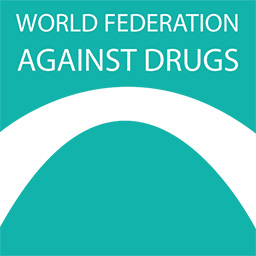
Elimination of Violence Against Women and will end on December 10th on the International Day of Human Rights, the WFAD Gender Working Group is publishing statements every day highlighting issues faced by different specific populations while continuing to highlight the topic of this year: UNiTE! Activism to End Violence against Women and Girls
Gender-based violence and substance use are strongly interlinked. The negative health impact the experienced violence has on the survivor can lead to substance misuse. Additionally, substance use perpetrator often accelerates violence. Therefore, each statement, calling for preventing and eradicating gender-based violence, also calls for substance use prevention as well as sensitised and comorbid treatment.
As shown in the previous statements, many face the risk of gender-based violence. Today, we would like to highlight the heightened risk of sexual and physical violence against persons from the LGBTQIA++ experience. Often, the focus within gender-based violence mainly prioritises women within research, awareness campaigns, and policies. However, members of the LGTBQIA++ are often overlooked and under researched, whereas many face gender-based violence and the consequences cause physical, psychological, and socioeconomic short- and long-term harm.
Statistics show that members of the LGTBQIA++ community, experience sexual violence at similar or higher rates than heterosexual people. Studies highlight that “around half of transgender people and bisexual women will experience sexual violence at some point in their lifetimes” (HRC Foundation). The heightened risk and the severe violation of human rights is linked to the “deeply-embedded homophobic and transphobic attitudes, often combined with a lack of adequate legal protection against discrimination on grounds of sexual orientation and gender identity” (UN n.d.), as well as higher rates of poverty stigma, and marginalisation (HRC Foundation n.d).
Additionally, the intersection with racial discrimination creates more vulnerability to discrimination and hate-motivated violence (UN n.d.). Withing the LGBTQIA++ community, transgender people and bisexual women are most often victims of sexual assault, often times from an early age (HRC Foundation). The [mental] health impacts of gender-based violence can be severe and long-lasting and could lead to alcohol and drug abuse (Norwegian Red Cross and ICRC n.d).
Survivors of gender-based violence within the LGBTQIA++ community face immense barriers to speak out. When speaking out, they could face retaliation, lack of protection, or being rejected by family and friends. Simultaneously, the stigma “around being a survivor of sexual violence can also prevent survivors in general from seeking help” (Kiss, et al. 2020).
Additionally, revelation of their sexual orientation and/or gender identity can hold back members of the LGBTQIA++ community from speaking out as it could not only lead to further violence but could also lead to serious jurisdictional implications as non-traditional sexual orientation and/or gender identity is considered a crime (Norwegian Red Cross and ICRC 2020).
Thirdly, due to existing harmful attitudes by service providers, including health care and mental health providers, the person might not seek support due to the fear to be revictimized or discriminated against. “In some contexts, LGBTQIA++ persons may be deeply suspicious and fearful of mental health and psychosocial services, due to harmful practices of gay and lesbian conversion therapy and the abuse of the psychiatric field to try and ‘correct’ homosexuality” (Norwegian Red Cross and ICRC n.d.) or having their sexual orientation and gender identity defined as a mental illness (Kiss, et al. 2020).
Fourthly, sensitised care is often lacking, as is awareness/knowledge on the types of gender-based violence members of the LGTBQIA++ community face. Therefore, it is a necessity to create further awareness on the issue.
Firstly, more research and mapping should be done to understand the statistics and the roots and consequences of gender-based violence against members of the LGBTQIA++ community. Secondly, more international guidelines, protocols, and documents guiding policy and practice should be established, implemented, and evaluated to prevent and respond correctly.
Thirdly, training should be provided to health care providers to increase the knowledge and decrease discriminatory practices and consider all aspects of existing vulnerability and experience (Kiss, et al. 2020). Mental health care and psychosocial assistance should be offered to help to recover from experiences of physical and sexual violence (Norwegian Red Cross and ICRC n.d.).
References
HRC Foundation. n.d. Sexual Assault and the LGBTQ Community. https://www.hrc.org/resources/sexual-assault-and-the-lgbt-community
Kiss, L., Quinlan-Davidson, M., Pasquero, L. et al. 2020. Male and LGBT survivors of sexual violence in conflict situations: a realist review of health interventions in low-and middle-income countries. Confl Health 14, 11
Norwegian Red Cross and ICRC. n.d. “That never happens here” – Sexual and gender-based violence against men, boys, and/including LGBTIQ+ persons in humanitarian settings. https://www.rodekors.no/globalassets/_rapporter/thatneverhappenshere_uu.pdf?mc_phishing_protection_id=28048-c7t8vm70s0vafoouhkkg
United Nations. n.d. LGBTQI+ – Free and Equal, NOT Criminalized. https://www.un.org/en/fight-racism/vulnerable-groups/lgbtqi-plus


Leave a Reply
You must be logged in to post a comment.